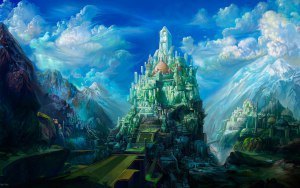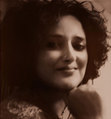Mira Prabhu's Blog, page 77
November 21, 2014
Steve Jobs, The I Ching and the Binary Mechanism of the Universe: The 5000 year old digital revolution…
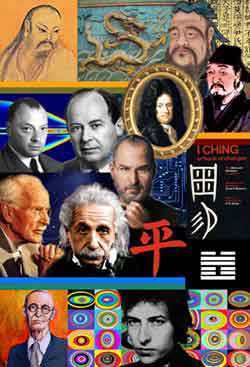 My friend John Nicholas Stoodley has played fascinating roles all over the world: while still at school, he was commissioned to produce a special design for the artist Picasso; he went on to assist Valentino in Rome, to run a champion basketball team from Los Angeles, study metaphysics in Manila, and to rewrite the world’s oldest book (the I Ching) in France. In his very own words, he has “done a lot”!
My friend John Nicholas Stoodley has played fascinating roles all over the world: while still at school, he was commissioned to produce a special design for the artist Picasso; he went on to assist Valentino in Rome, to run a champion basketball team from Los Angeles, study metaphysics in Manila, and to rewrite the world’s oldest book (the I Ching) in France. In his very own words, he has “done a lot”!
John currently lives on a small tropical island and has just published a unique website on the I Ching based on over twenty years of personal research on the subject: https://newiching.com/
Now here’s what he has to say about the digital revolution:
We think of the digital revolution as “our” revolution – a fairly recent phenomena that started to sweep through the world during the second half of the 20th century and then quickly altered the way that we interacted with technology and each other. We are “connected” now: converged, addicted and forever changed by the experience. But it is not really “our” revolution at all.
When Steve Jobs dropped out of college in 1973, he studied an ancient Chinese system of philosophy and divination for a year. It was called the I Ching and though he probably did not know it at the time, it was this system – basically the world’s oldest book – that had provided the essential link to the digital revolution that would so involve him.
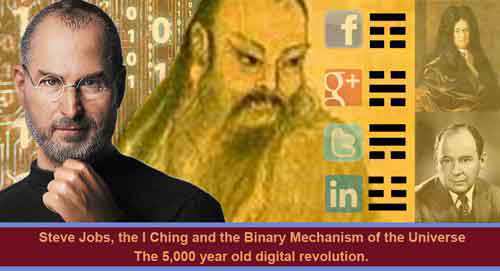
Initially created as a system of divination by the legendary Emperor and sage Fu Xi some 5,000 years ago, it was popularly believed that his inspiration was supernatural. Paranormal mysticism was as common in China during that period as Facebook is today though, so we must take such statements with a grain of salt. However the I Ching was definitely far from mundane: Regarded by many as a book of “magic”, it seemed to know a questioner better than they knew themselves.
Whatever the I Ching’s true genesis though – supernatural or more cerebral – its system of divination steadily acquired mythical associations when the revered Chinese philosopher Confucius announced that should he live another fifty years, he would spend all of them studying the I Ching. He added many philosophical texts himself and, not surprisingly, the book’s reputation then spread throughout the land. In the language of today’s digital revolution: it went viral!!!
The idea behind the I Ching is extremely simple: that the various circumstances that occur in our lives – indeed the whole universe – are the result of two interacting forces named Yin and Yang. Yin is regarded as yielding, feminine, fertile and of the earth, while Yang is masculine, masterful, creative and heavenly. These two symbols interact with each other in various formations and so create the various influences and changes that affect our lives. Representing Yin with a broken line and Yang with an unbroken one, a system of divination was then created. By throwing coins or yarrow sticks a questioner could then be given answers according to how the coins or sticks fell.
Eventually developing into a more sophisticated system of 64 hexagrams of 6 lines each, the I Ching’s methodology – how it calculated answers – became as much an interest to inquiring minds as did it’s uncanny abilities to foretell the future. It certainly fascinated one of the greatest mathematicians in history, Gottfried Leibniz who, in 1703, published a description of a new form of calculation called “an explanation of the binary arithmetic……and on the light it throws on the ancient Chinese figures of Fu Xi”. He had been inspired to create this “new” system after studying how the I Ching basically synthesized all universal interactions into a system of either broken or straight lines.
The new arithmetic which Liebniz described is used in the digital device on which you are reading these words right now: Binary Code. Nearly 250 years later, the great mathematician John Von Neumann – a colleague of Einstein – was largely responsible for the construction of the world’s first digital computer; it is no coincidence that he too was as fascinated by the workings of the I Ching, as had Leibniz been before him.
But perhaps the greatest testament of all concerning the mysterious workings of the I Ching is not that the well-respected psychoanalyst Carl Jung studied the I Ching for decades and based his Theory of Synchronicity on it, or that Nobel Prize winning quantum physicist Wolfgang Pauli collaborated with Jung – equally transfixed by a system that seemed to understand the binary mechanism of the universe – but that Bob Dylan said in a 1960’s interview: “I just don’t have any religion or philosophy. I can’t say much about any of them (but) there is a book called the I Ching, I’m not trying to push it, I don’t want to talk about it, but it’s the only thing that is amazingly true, period…”
 In conclusion, let me say that it’s far from easy being a human being in today’s complex world: so many what ifs….who, why, when…should I, or better not? So go ahead and discover much more about this fascinating system of divination and see why I – with incredible audacity – decided to reconfigure, adapt and basically rewrite the world’s oldest book. In fact, feel free to ask me a question and get a free answer at https://newiching.com/ - and prepare to be surprised – the answers are sometimes startlingly direct, which is what is often what we need!
In conclusion, let me say that it’s far from easy being a human being in today’s complex world: so many what ifs….who, why, when…should I, or better not? So go ahead and discover much more about this fascinating system of divination and see why I – with incredible audacity – decided to reconfigure, adapt and basically rewrite the world’s oldest book. In fact, feel free to ask me a question and get a free answer at https://newiching.com/ - and prepare to be surprised – the answers are sometimes startlingly direct, which is what is often what we need!


November 18, 2014
All That is Wrong
“The idea that some lives matter less is the root of all that is wrong with the world”…thank you “Exposing the Big Game” for this powerful statement….it is the reason why today I rest in the cradle of Advaita-Vedanta – Advaita = Not Two. When the realization that we are truly One sinks in, we cannot be cruel to any other living being.
 Originally posted on Exposing the Big Game:
Originally posted on Exposing the Big Game:


November 15, 2014
The Moksha Trilogy & Mishi Bellamy, Artiste Extraordinaire
 One warm Rajasthani afternoon in the year 2008—while taking a break from festivities hosted at splendid Diggi Palace Hotel where I happened to be residing courtesy the sponsors of the Jaipur Literary Festival—I found myself wandering aimlessly through the sprawling semi-forested area behind the Hotel. Turning a corner, I spotted a woman ensconced on the porch of a charming old-world cottage—glasses perched dizzily at end of pert nose and sketching madly away. She looked up at my approach. “I know that face,” she said, peering up at me. “Aren’t you an emcee at the Lit Fest?” “C’est moi,” I said, and that’s how Mishi Bellamy and I became friends.
One warm Rajasthani afternoon in the year 2008—while taking a break from festivities hosted at splendid Diggi Palace Hotel where I happened to be residing courtesy the sponsors of the Jaipur Literary Festival—I found myself wandering aimlessly through the sprawling semi-forested area behind the Hotel. Turning a corner, I spotted a woman ensconced on the porch of a charming old-world cottage—glasses perched dizzily at end of pert nose and sketching madly away. She looked up at my approach. “I know that face,” she said, peering up at me. “Aren’t you an emcee at the Lit Fest?” “C’est moi,” I said, and that’s how Mishi Bellamy and I became friends.
Over tea and crumpets (okay, they were ordinary bikkis, but Mishi is so quintessentially English/Bohemian we should have gorged on crumpets with dollops of raspberry jam and clotted cream, accompanied by Earl Grey or Lapsang Souchong) we became friends. It came to me then, though I did not say so at the time, that we were simply old comrades reconnecting.
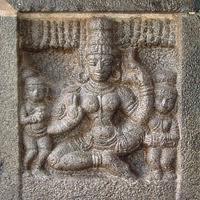 I was surprised to see how expert her sketch looked. “Come,” said Mishi, and led me into her secret chamber to reveal to me more of her artwork. I was blown away! Truly I had seen nothing like it before! Could a living breathing human produce art of such surreal perfection? I babbled on about how terrific an artist she was and meant every word. And, as you will see for yourself from these samples below, Mishi Bellamy is an Artiste Extraordinaire:
I was surprised to see how expert her sketch looked. “Come,” said Mishi, and led me into her secret chamber to reveal to me more of her artwork. I was blown away! Truly I had seen nothing like it before! Could a living breathing human produce art of such surreal perfection? I babbled on about how terrific an artist she was and meant every word. And, as you will see for yourself from these samples below, Mishi Bellamy is an Artiste Extraordinaire:
Mishi and I stayed in touch over the next seven years, through ups and downs and mutual globe-trotting. In 2013, when I self-published Whip of the Wild God: A Novel of Tantra in Ancient India, she told me she loved the novel and expressed disappointment that I had not asked her to create the cover. Everything had happened serendipitously, I explained—neither I nor the two friends who’d helped me launch Whip had any idea what we were doing. For the cover, I’d approached a gifted young artist I’d met at a local ashram here in Tiruvannamalai—but he was a novice at cover design and the four of us had bumbled around to produce the current cover.
Whereupon Madamoiselle Mishi (she now lives in France) said: look, Mira, I can design the cover of your work-in-progress novel (which is Krishna’s Counsel), but since you’re bringing out a trilogy of novels on enlightenment, it’s best you bring all three covers into artistic line. I assured her the artist friend who had helped us with Whip’s original cover would not mind if she re-did it with this noble aim in mind—Abhilash Sivadas is after all an up-and-coming professional with plenty on his own plate to be concerned about. And so Mishi swung her delicate skills into action and designed a fabulous cover, not just for Krishna’s Counsel:

but also for Whip of the Wild God…

As soon as she frees up from her own intense schedule, Mishi promises to design the cover of Copper Moon Over Pataliputra, my third and final saga on the molten process of transmuting our darkness into light—and which I plan to finish within the next three years or so; at which point, if the gods continue to beam down their grace upon our hardworking heads, my trilogy will be complete.
Oh, and by the way, if you want to see more of Mishi’s work, or contact her to create any form of artwork, contact her via mishi@mishibellamy.com; you can also see more of her fabulous work on Behance.net and on mishibellamy.com)
Just for the record, although the protagonists of each of these three novels are different and were born in different ages (the first around 1800 BCE, the second in 1960′s Bangalore, south India, and the third around 300 BCE), I call my work a trilogy because the main metaphysical/spiritual theme is moksha or enlightenment. All three of my gorgeous, brilliant but emotionally volatile/ vulnerable heroines—despite their godawful plunges into hedonism and utter stupidity from time to time—are chasing the same pot of gold—which Ramana Maharshi described as being a blissful state free of desire and fear.
Gautama Buddha described this ultimate freedom in his powerful mantra: Gate Gate Paragate Parasamgate Bodhi Svaha. Beyond, beyond, even beyond, there lies the Soul. A bad transliteration written on the fly, I will admit; nevertheless it is the state of exaltation that the Awakened One pointed to that resonates with me—one of blissful consciousness that surpasses all forms of mundane happiness.
 Sweet greetings from sacred Arunachala, where the incredible process of burning down the ego so we can experience ourselves as the almighty Self is accelerated by the power of Shiva the Destroyer!
Sweet greetings from sacred Arunachala, where the incredible process of burning down the ego so we can experience ourselves as the almighty Self is accelerated by the power of Shiva the Destroyer!
Follow Blog via Email
Enter your email address to follow this blog and receive notifications of new posts by email.
Click the buttons below to SHARE if you liked this post.


November 13, 2014
A question for you all…
Jack Eason on that fascinating genre known as Fantasy…
 Originally posted on Have We Had Help?:
Originally posted on Have We Had Help?:
What do you think constitutes fantasy?
If, like most of today’s younger generation, you blindly accept without question what the film and television industries insist is the case, then you need look no further than the US series Game of Thrones or the UK series Merlin.
I’m sorry to disillusion everyone, but television and films did not invent fantasy. It was books that first made it popular. There is so much more to the genre than either of the above, dare I say it, boring examples. While undeniably they look spectacular on our television screens, wouldn’t you far rather conjure up your own visions in your mind? In other words, use your imagination. Give it a try. You never know, you may find that picturing each scene from a book is far more satisfying than merely vegging out in front of your television sets to look at pretty pictures.
View original 176 more words


November 9, 2014
Monday Funnies
The Four Yorkshiremen….from “At Last the 1948 Show” – Brooke-Taylor, Chapman, Cleese and Feldman – not just funny, necessary watching! Thank you Story Reading Ape!!!
 Originally posted on Chris The Story Reading Ape's Blog..... An Author Promotions Enterprise!:
Originally posted on Chris The Story Reading Ape's Blog..... An Author Promotions Enterprise!:
From the “At Last the 1948 Show”
The Four Yorkshireman
(You might need to up your sound and listen carefully,
but it’s worth it :D )


November 8, 2014
Another Awww Alert & Pet Peeves Post
Just got to take a look at these Pet Peeves….thanks Chris Graham!
 Originally posted on Chris The Story Reading Ape's Blog..... An Author Promotions Enterprise!:
Originally posted on Chris The Story Reading Ape's Blog..... An Author Promotions Enterprise!:








November 7, 2014
Hear That Lonesome Whistle Blow!
Always had a fascination with trains…hearing that lonesome whistle blow still brings up an eerie form of nostalgia…now here’s Thom Hickeys’ intriguing post from The Immortal Jukebox, where he links his love of trains with his love of music…
 Originally posted on The Immortal Jukebox:
Originally posted on The Immortal Jukebox:
http://#161719353 / gettyimages.com
Somewhere in my memory and imagination there’s always a train. Maybe it’s the evening train soothing me to sleep or perhaps it’s the night train letting loose its eerie lonesome whistle as it heads off into the darkness in search of the dawn.
Trains heading from shore to shore, north and south, east and west, over the mountains, through the valleys and the deserts, across the endless plains. Travellers, clutching their ticket to ride, look out the window at the passing show wondering anxiously or excitedly about the welcome waiting for them at their destination.
We get on trains for all kinds of reasons. Because we got in trouble and had to roam, because we need to make a new home, a new life, in a new place where nobody knows our name. Because we are starting a new adventure or running back to safety after…
View original 1,451 more words


November 5, 2014
The Three “Acts” of a Writer’s Journey—From Newbie to Master
The Three “Acts” of a Writer’s Journey — From Newbie to Master — thanks for a great post, Kristen Lamb! Also a much needed one for those who don’t realize what tremendous commitment and effort it takes to become the best writer you can be…to achieve that smooth and lucid flow that appears to be so darn easy….but is in fact the result of years of hard (though blissful) work….
 Originally posted on Kristen Lamb's Blog:
Originally posted on Kristen Lamb's Blog:

Pirate Code=Writing Rules. Clearer now? :)
The mark of a great storyteller is they make our job look easy. The story flows, pulls us in, and appears seamless. Many of us decided to become writers because we grew up loving books. Because good storytellers are masters of what they do, we can easily fall into a misguided notion that “writing is easy.” Granted there are a rare few exceptions, but most of us will go through three acts (stages) in this career if we stick it through.
Act One—The Neophyte
This is when we are brand new. We’ve never read a craft book and the words flow. We never run out of words to put on a page because we are like a kid banging away on a piano having fun and making up “music.” We aren’t held back or hindered by any structure or rules and we have amazing…
View original 1,152 more words


November 2, 2014
Lincoln’s Prophetic Dream
Abe Lincoln’s prophetic dream of his own assassination…spooky…many of us are able to see beyond the veil…but this dream he had was so vivid…prescience…thank you Dr. Steven Fox…
 Originally posted on Dreams: Guide to the Soul:
Originally posted on Dreams: Guide to the Soul:

The president is dead. He was assassinated.
Lincoln had this dream shortly before his assassination:
About ten days ago, I retired very late. I had been up waiting for important dispatches from the front. I could not have been long in bed when I fell into a slumber, for I was weary. I soon began to dream. There seemed to be a death-like stillness about me. Then I heard subdued sobs, as if a number of people were weeping. I thought I left my bed and wandered downstairs. There the silence was broken by the same pitiful sobbing, but the mourners were invisible. I went from room to room; no living person was in sight, but the same mournful sounds of distress met me as I passed along. It was light in all the rooms; every object was familiar to me; but where were all the people who were grieving…
View original 147 more words


Monday Funnies
Marty Feldman in Bookshop Sketch! Must watch! Hilarious!!! Thank you Story Reading Ape for cheering me up this rainy Monday morning…
 Originally posted on Chris The Story Reading Ape's Blog..... An Author Promotions Enterprise!:
Originally posted on Chris The Story Reading Ape's Blog..... An Author Promotions Enterprise!:
The great Marty Feldman in a “Not the 1948 Show” Bookshop sketch







